

Smartwatches in 2025 are about to redefine what you expect from wearable technology. But here's the plot twist—most consumers have no idea about the groundbreaking features they'll soon hold on their wrists.
This is not just a trend; understanding these innovations is crucial before making a purchase. As we dive into the future, what you’ll discover could save you a fortune and ensure you snag cutting-edge tech.
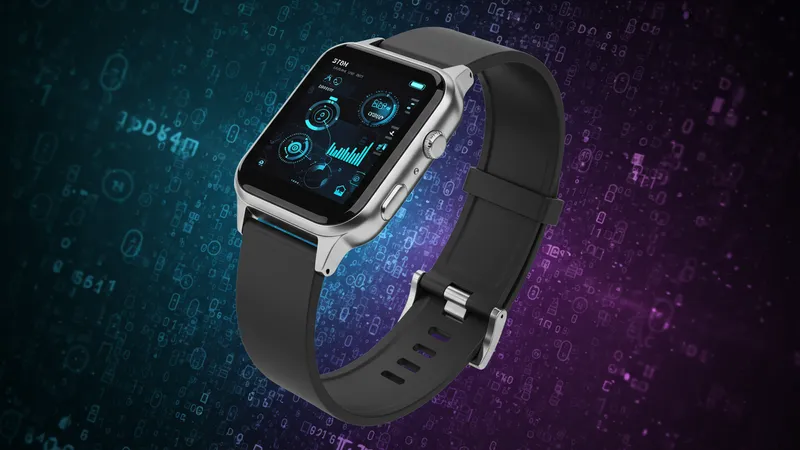
Prepare yourself for a shock—smartwatches of 2025 are not what they seem. While many focus on aesthetics and brand, few realize the advanced health features are literally lifesavers. New sensors are now capable of detecting arrhythmias before symptoms appear, turning a casual glance at your wrist into a potential life-saving moment. But that’s not even the wildest part…
Just when you think you’ve seen it all, the tech takes a jaw-dropping leap. Imagine a device that learns your habits so well it predicts your needs before you do. From automated hydration reminders to UV exposure alerts, this tech will become your personal health concierge. Could this mean the end of traditional wearables? What happens next shocked even the experts...
As we delve deeper into 2025's smartwatch advancements, one aspect stands out—the unseen yet groundbreaking features that manufacturers are packing into these miniature marvels. While many focus on flashy displays and sleek designs, the real game-changer lies beneath the surface. The incorporation of nanotechnology now enables smartwatches to monitor your vitals more accurately than ever before. But beyond health metrics, imagine being able to access emergency services with a single SOS tap. These hidden features are not just setting new standards; they're raising the stakes on personal safety. What you read next might change how you see this forever.
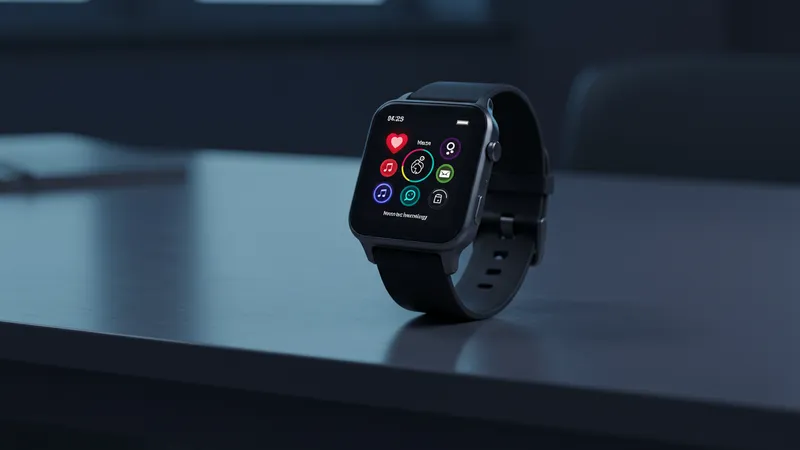
In today’s fast-paced world, productivity-enhancing features have never been more in demand. The latest smartwatches now offer seamless integration with professional tools, enabling you to execute business operations straight from your wrist. From drafting emails to participating in virtual meetings, productivity is literally at your fingertips. This kind of connectivity was unheard of just a few years ago, marking a revolutionary shift in how we perceive work-life balance. But there's one more twist…as these devices get smarter, could they also be stepping stones to an era of tech dependency?
Imagine a world where your smartwatch is your primary mode of communication. With advanced voice-assistant features capable of executing complex commands, the reliance on smartphones is diminishing. People are using their smartwatches to manage everything from their calendars and message threads to controlling smart-home devices. It's as if the traditional phone is becoming obsolete. But with great power comes great responsibility; how are companies ensuring data security with these highly connected devices? The next revelation might just blow your mind.
Curiosity usually drives progress, and this couldn’t be truer for the augmented reality features being baked into 2025 smartwatches. Mapping technology is being revolutionized with real-time overlays projected from your wrist. Imagine navigating a new city with prompts that guide your every step, or receiving contextual information about landmarks merely by raising your arm. These features are more immersive than any guidebook or mobile device has ever been. But could this doorway to an augmented world bring hidden dangers? Prepare to confront new dimensions of reality.
A common concern for prospective smartwatch owners is battery life. In 2025, industry leaders have flipped the script on what’s possible. The old narrative of daily charging has been broken by devices capable of lasting weeks on a single charge. Thanks to ultra-efficient processors and solar-augmented charging screens, running out of juice is now a rarity. But what’s more astonishing is the innovation in rapid charging technology that can power your device in mere minutes. Yet, there’s still more to unravel as new energy sources emerge, redefining what's considered achievable.

Beyond battery longevity, manufacturers are diving into new realms of power management. Imagine a smartwatch powered not only by solar energy but also by kinetic movement and body heat. With every step you take or movement you make, your watch recharges a bit more. This trifecta offers an almost perpetual power source. However, as these innovations progress, the complexities of managing and optimizing such multifaceted charging methods become a topic for the tech elite. What lies ahead in the field of wearable energy strategy? The next innovation might upend the energy sector.
Users often worry about the environmental impact of electronic devices, particularly concerning their disposal. In response, leading companies are adopting greener practices, crafting designs using sustainable materials that are easily recycled. Advances in removing rare earth elements from production cycles are not only lowering ecological footprints but also lowering costs. As your smartwatch pays tribute to Mother Earth, it’s only fitting to explore what other eco-friendly advances are brewing. Could smart technology be paving the way for a more sustainable future?
The quest for more power-efficient devices has also led to breakthroughs in passive biometrics. This technology allows your watch to determine which functions to prioritize based on your real-time activity levels and heart rate. It provides enhanced performance during sporting activities, then winds down to save power during inactivity. This dynamic management approach keeps your device just as active or restful as you are. Could the interplay between human action and device wisdom herald a new frontier for wearables? The forthcoming revelation will astound.
As technology advances, so do concerns around security and privacy, especially in wearable tech. The latest smartwatches are not just protecting your data—they're encrypting it in real time. Robust security measures are now standard, including biometric authentication and end-to-end encryption of all communications. Partnerships with cybersecurity firms ensure that data breaches are a rarity. While these measures are impressive, there remains a lingering worry over whether such advances can truly safeguard against hackers in an interconnected world. But the next breakthrough in security might rewrite everything.
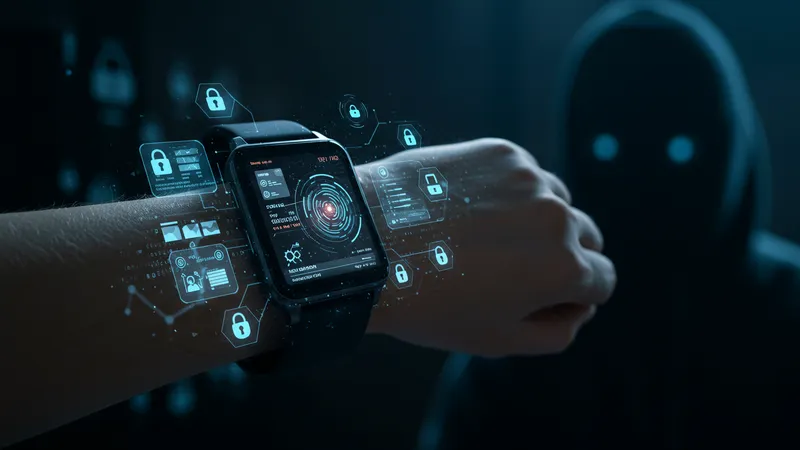
Innovations in AI and machine learning are transforming smartwatch security into a predictive science. By learning your usage patterns, smartwatches can now detect anomalies in real-time, such as unusual logins or unauthorized access, immediately notifying you of potential threats. As AI becomes more refined, its applications expand to include proactive measures against future risks. However, the ethical implications of AI-driven surveillance are a subject of fierce debate. As we delve deeper into the ethics of AI, the line between protection and invasion of privacy grows ever thinner. The controversy doesn’t end there.
Smartwatch users value privacy, and companies have responded by offering customizable settings that give users control over what data gets shared and with whom. From location tracking to health data, the level of user autonomy today is unprecedented. However, is this level of control enough, or does it merely provide an illusion of security? As watchdog groups scrutinize these privacy settings, what’s deemed transparent might not be the full story. The reality of wearable-tech privacy unfolds further than imagined.
Your heart rate, movements, and even sleep patterns are constantly being recorded, creating a detailed map of your life. While many see the benefits of such comprehensive monitoring, there’s an uneasy balance between sharing and safeguarding personal data. The key challenge lies in maintaining this equilibrium without overstepping ethical boundaries. How do we draw the line between utility and exploitation? You won’t believe what the experts predict about the future of personal data management—it’s a game-changer.
Artificial intelligence in smartwatches is reshaping daily life in ways that few could have anticipated. With personalized AI, your device learns and adapts to your daily routine, offering reminders and suggestions tailored specifically to you. This level of customization is not only convenient but also time-saving. The AI anticipates your needs, from suggesting timely breaks to reminding you of important meetings, ensuring that nothing is ever overlooked. As AI becomes more intuitive, one must ponder whether its growing role could eventually diminish human autonomy. But there’s yet another perspective to consider.
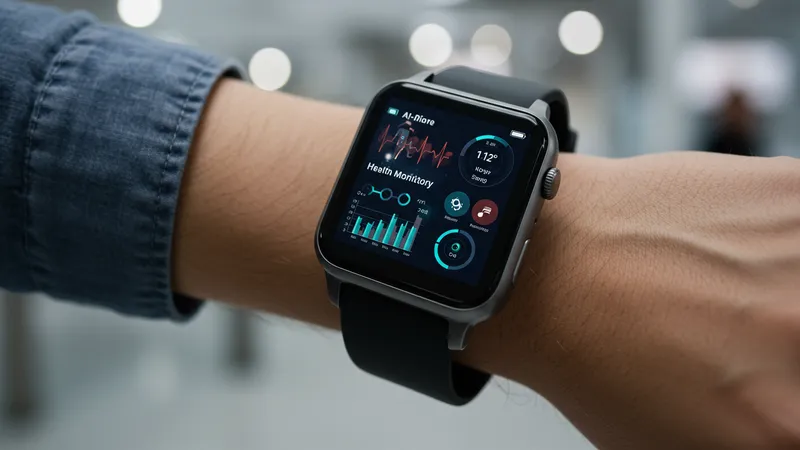
AI in smartwatches extends far beyond personal assistance. It’s paving the way for advancements in healthcare management akin to having a doctor on your wrist. Monitoring vital signs with acute precision, AI provides early detection alerts that allow users to address potential health concerns before they escalate. This capability is revolutionizing preventive care and empowering individuals to take charge of their health. However, the dependency on AI for such critical functions raises questions about our reliance on machines. The upcoming implications could redefine the patient-doctor relationship as we know it.
In the realm of home automation, AI-equipped smartwatches are becoming command centers. By integrating with smart home systems, they streamline the process of controlling appliances, lighting, and security at a glance or verbal command. The synergy created between devices is not just a technological leap; it’s a lifestyle upgrade. However, this interconnectedness also creates a new frontier for security vulnerabilities. How do we secure an environment where everything is linked? Await revelations on the balance of convenience versus risk.
At the heart of smartwatch innovation is a drive to bridge gaps—between technology and humanity, functionality and user-friendliness. AI’s ability to learn and evolve is its greatest strength and the most significant cause for concern. As machines grow smarter, the human element could become marginalized. While the union of AI and wearables promises enhanced quality of life, is there an unintended consequence in this inexorable march? Experts argue the future might hold surprises that could either mitigate or amplify these concerns far beyond today's imagination.
In 2025, smartwatches are making bold style statements, combining high-tech features with fashion-forward designs. No longer limited to just tech enthusiasts, these devices have quickly become fashion accessories that reflect personal style and sophistication. Leading brands are collaborating with famous fashion houses to produce limited edition models that are both cutting-edge and exceedingly chic. As these collaborations continue, smartwatches are poised to blur the lines between gadgets and luxury items. Yet, there’s a catch—are these stylish innovations truly practical?
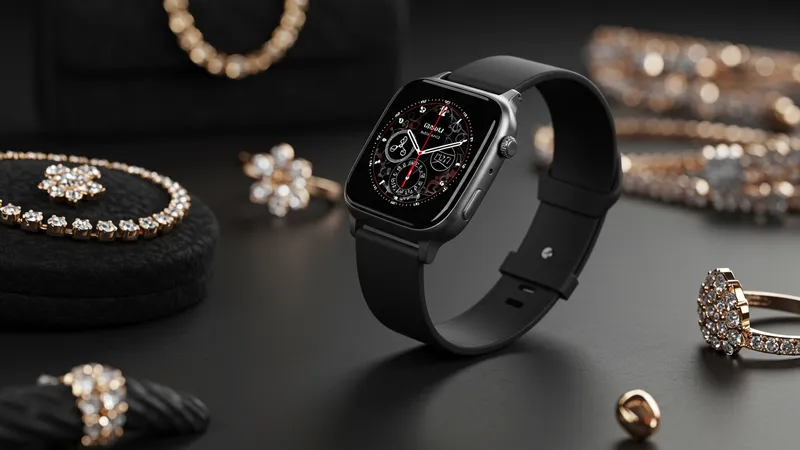
With an increasing emphasis on aesthetics, smartwatches are now available in a myriad of designs with customizable options to suit any taste. From interchangeable bands to bespoke watch faces crafted by leading designers, wearers can express individuality and creativity. However, the question arises: does fashion compromise function? In the quest for stylish wearables, are essential features being overshadowed or sacrificed? The nuances of merging technology with fashion are more complex than they appear, leading to innovations yet to be unveiled.
The fusion of fashion and technology in smartwatches has opened new markets and demographics. Young adults, the elderly, and even children are now viable consumers thanks to approachable, trendy designs that cater to diverse tastes and preferences. These stylistic decisions are reshaping marketing strategies, and the resulting inclusivity is breaking barriers in wearable tech adoption. Nevertheless, this pivot towards diversity brings with it the challenge of retaining functional integrity across various user expectations. As brands navigate these waters, surprises and setbacks alike promise to redefine this dynamic industry.
Surprisingly, the integration of fashion into smartwatch design is also rich in cultural significance. Designers are drawing inspiration from traditions and modern cultures, creating unique pieces that resonate on a deeper, more personal level with consumers. This cultural embedding fosters a sense of identity and belonging, enriching the smartwatch’s role beyond a functional tool. However, this can also risk cultural misappropriation, and balancing sensitivity with creativity is crucial. The cultural conversation around wearable tech is evolving—are you ready for what lies ahead?
Gone are the days when smartwatches were mere pedometers. In 2025, they have transformed into comprehensive health platforms that monitor a wide spectrum of physical parameters. Heart rate, sleep quality, blood oxygen levels, and even stress indicators are just the tip of the iceberg. This technology is not only boosting fitness levels but revolutionizing patient care by providing valuable data to healthcare providers, making routine health check-ups more proactive than ever before. Yet, one must wonder—is there a downside to this level of surveillance?
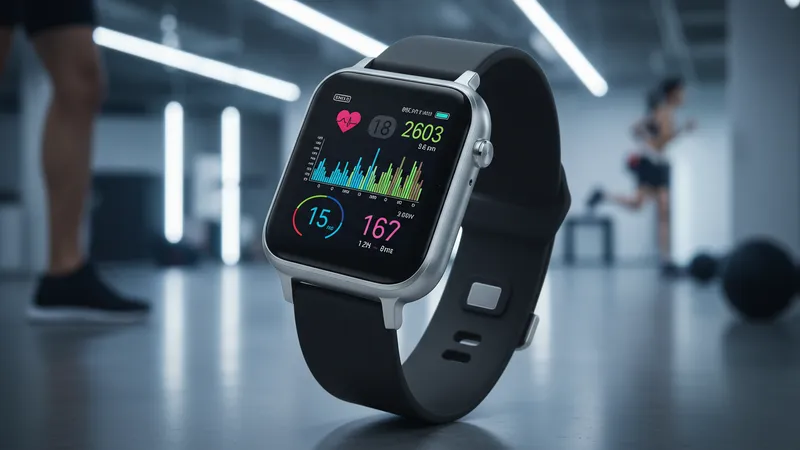
The advanced algorithms powering today’s smartwatches tailor health recommendations specific to the user. By analyzing patterns and trends, the device provides insights that help improve lifestyle choices, from exercise programs to dietary adjustments. These personalized nudges are more than motivational—they’re health interventions. But is there a point where continuous monitoring becomes an encumbrance rather than empowerment? Understanding the fine line between helpful and intrusive holds the key to optimizing smartwatch utility.
For athletes and fitness enthusiasts, the wearable tech evolution means precise training metrics and comprehensive performance analyses are at their disposal. Smartwatches track progress in real-time, providing instant feedback to enhance training regimens. Cutting-edge features like adaptive workouts and AI-driven coaches mimic personal trainers, offering unprecedented levels of support. However, with this newfound reliance on technology, is there a risk of diminishing human intuition and the spontaneity of personal accomplishment? The complexities of integrating AI into fitness are both intriguing and challenging.
Moreover, the gamification of fitness through smartwatch interfaces is encouraging more people to stay active. Challenges, community progress boards, and rewards for milestones keep motivation levels high and create social interactions that enhance engagement. Gamified health not only supports individual goals but builds communities striving for wellness. However, the balance between maintaining high engagement and keeping it stress-free is a tightrope nature. How these gamified experiences will evolve could redefine personal fitness aspirations forever.
Smartwatches of 2025 are fundamentally altering the way we approach work and personal productivity. These devices are no longer passive instruments; they act as proactive productivity partners, adapting to the wearer’s workflow. With features designed to increase efficiency, such as real-time notifications, seamless schedule management, and interactive meetings, smartwatches are transforming office productivity. Yet, amidst the array of tools at hand, could these features become more of a distraction than an asset?
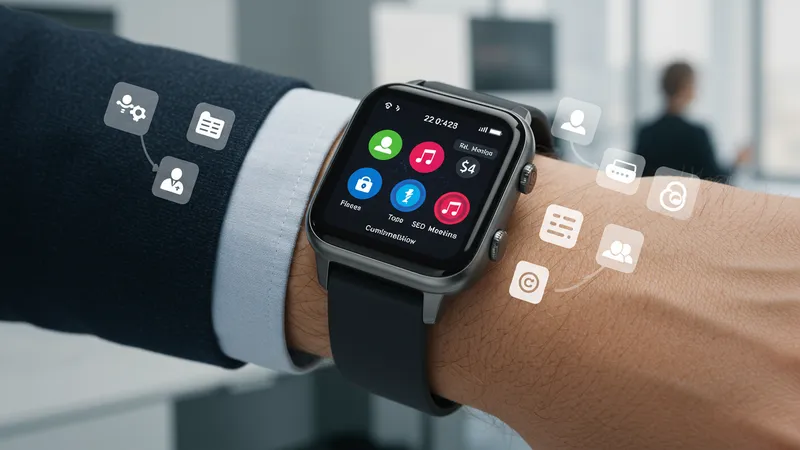
One of the most impressive advancements lies in rechargeable and customizable watch faces that adapt based on different contexts like meetings, reading, or exercising. This dynamic adaptability means that users always have the most relevant tools at their fingertips, simplifying multitasking and enhancing focus. However, personalization can lead to over-reliance on presets and configurations. As technology tunes in more closely to our tasks, there’s a creeping fear of losing personal efficiency. What strikes the ideal balance between support and safeguarding autonomy?
The role of AI in reshaping productivity can't be understated. With predictive reasoning, AI can manage daily to-do lists, anticipate deadlines, and provide reminders for upcoming tasks, allowing users to focus on big-picture thinking. This level of foresight drastically cuts down on cognitive load, fostering an environment where creativity thrives. Nonetheless, as AI streamlines our lives, where do humans reclaim control in this algorithm orchestrated workspace? The remnants of traditional workflow balance teeter on the brink of revolution.
Meanwhile, the boundary between work and personal life is becoming increasingly blurred. With notifications from both spheres competing for attention, the once-clear lines that divided them are fading. Smartwatches excel at bridging this gap through features that enable seamless switching between professional duties and leisure activities. As compelling as this seems, there remains a looming concern: what is lost when privacy and focus are compromised for accessibility? How this dynamic unfolds could very well catalyze a redefinition of work-life balance concepts.
Voice assistants are at the forefront of smartwatch innovation in 2025, fundamentally changing the way users interact with technology. Always at the ready, voice assistants provide real-time answers, control smart devices, and perform tasks, minimizing the need for physical interaction. This hands-free capability not only heightens convenience but also expands accessibility options for individuals with diverse needs. However, with voice commands steering the user experience, does this shift toward frictionless interaction come at the cost of privacy?
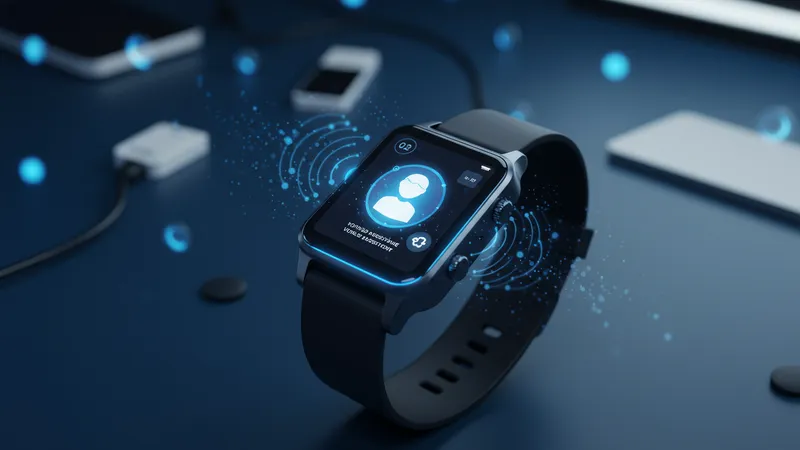
Featuring natural language processing advancements, voice assistants are becoming more conversational and context-aware, allowing interactions to mimic human communication nuances subtly. These enhanced dialogues facilitate a deeper understanding, making voice assistants intuitive to user preferences and moods. While this develops a seamless user experience, it also raises questions of dependency and potential loss of personal interaction. As voice-controlled interfaces takeover, where does the boundary between human-centric design and artificial engagement blur?
For those juggling hectic schedules, voice assistants prove invaluable in time management. With the ability to set reminders, provide traffic updates, and even compose messages through dictation, they prioritize efficiency and time savings. These virtual assistants have become essential productivity tools in the modern-day hustle. Yet, one can’t help but question the trade-off between convenience and cognitive engagement. When technology performs routine tasks, what motivational impetus remains for mind development strategies? This evolution holds implications that extend beyond mere comfort.
Innovations in this sphere have seen personal voice profiles being introduced, recognizing an individual user even in multi-user households ensuring tailored responses. This specificity enhances personalized service but also highlights potential security vulnerabilities within voice-activated devices. While protective measures evolve alongside technology, the challenge of ensuring data safety and trust remains. How these potential pitfalls are tackled might just redefine consumer faith in wearable security for generations to come.
The connectivity potential of smartwatches in 2025 is redefining how we think about being "online." With cellular capabilities, smartwatches are transcending mere smartphone companionship to become autonomous communication tools. What's fascinating is the newfound ability to connect with IoT devices effortlessly, making smartwatches critical interfaces for technology ecosystems. But, with increasing connectivity comes an inundation of data traffic that warrants examination. Are our current networks robust enough to handle this deluge?
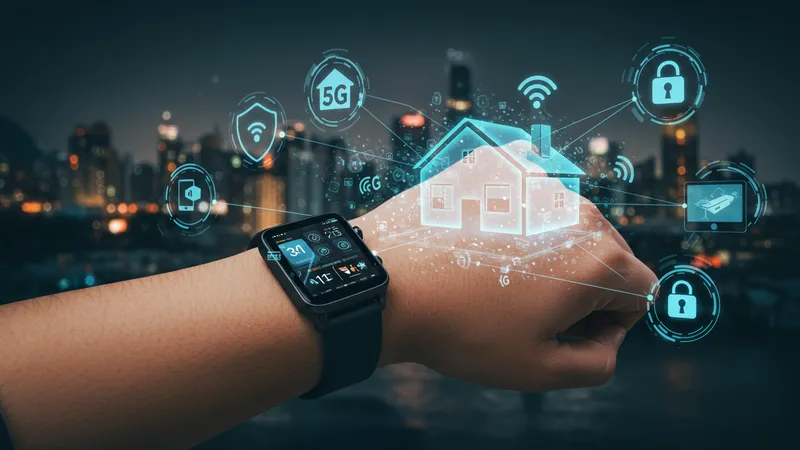
The push towards 5G has dramatically improved the smartwatch experience. Fast, low-latency connections mean seamless streaming and lightning-fast data transfer. Moreover, future-proofing devices with 5G not only enhances current capabilities but also accommodates advancements like edge computing poised to minimize response times. Yet, within this rapid connectivity revolution, cybersecurity stands paramount. As interconnectedness accelerates, maintaining a balance between speed and safety becomes critical. The technological capabilities of 5G might change everything—are we ready for the transformation?
Redefining connectivity also means offering smarter peer-to-peer communications. With protocols allowing watches to form mesh networks, they facilitate device-to-device connections without internet dependency. This advancement promotes messages and data to be easily transferred within networks, improving freedom of communication in remote areas. These possibilities open new doors for connectivity where traditional infrastructure lacks reliability. However, there remains the concern of maintaining privacy in such mesh setups where data flows freely. Every step forward invites another layer of complexity we must address.
The concept of connectivity extends beyond functionalities to how we philosophically interact with technology. As smartwatches encourage consistent online interactions, there lies a paradox. The very tool that brings us closer to digital realms may also promote disconnection from the tangible world. Are these notifications and smart capabilities an enhancement or a hindrance to personal experiences? Understanding and optimizing the role of digital connectivity in modern life could shape the connection ethics for a future where peace and focus are prized over the perpetually online persona.
In 2025, smartwatches are making significant strides in education by serving as innovative learning tools. Equipped with reminders, timers, and interactive apps, they encourage efficient study habits and time management skills, reshaping educational paradigms. Additionally, real-time feedback from educational tools on smartwatches contributes to enhanced learning experiences, tailoring teaching methods to student performance in ways traditional settings can’t match. But as the educational landscape evolves, how do we reconcile technology's role in an age-old learning environment?
Smartwatch learning goes beyond individual use, creating communal learning experiences where peer interactions are facilitated. By utilizing collective apps and games, lessons become more engaging, encouraging collaborative problem-solving and critical thinking. This community-centric approach not only fosters inclusivity but also pushes boundaries in traditional education systems. However, there's an ongoing debate about technology's heavy integration in education, arguing it might overshadow foundational learning. As schools adopt smart tech, what balances are needed to safeguard core educational values?
In the educational space, accessibility gains from smartwatches are noteworthy. Students with diverse learning needs benefit from audible content, haptic feedback, and immersive AR experiences that cater to various learning styles and capabilities. These advances aim to make education more equitable. Yet, we are tasked with addressing the digital divide—the disparity in access to devices and the internet. How do we ensure the democratization of education through tech while bridging this gap? The implications for inclusion within education in the digital age could be groundbreaking.
The success of smartwatches in education isn’t without potential pitfalls. Over-reliance on digital resources rather than critical engagement with material is a concern. The question remains: does technology cultivate laziness or inspire ingenuity in the school context? As students increasingly use devices for learning, teaching methods must evolve to ensure critical thinking isn't sidelined by convenience. How educational systems respond to these challenges might define whether technology acts as a conduit for best educational practices or stumbles into unintended consequences.
Smartwatch manufacturers in 2025 are increasingly shifting their focus towards sustainable practices due to growing environmental concerns. Companies are investing in eco-friendly materials such as recycled metals and vegan leathers, significantly reducing their carbon footprint. Additionally, sustainable packaging alternatives are becoming standard. These initiatives not only resonate with environmentally conscious consumers but also set new industry benchmarks. However, the quest for sustainability presents its own challenges. How do companies balance between market demands and truly impactful environmental stewardship?
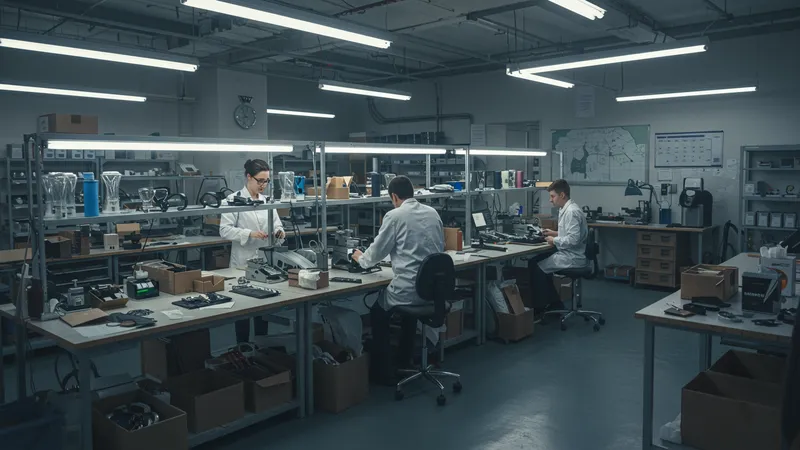
Encouraging a circular economy, manufacturers are incorporating more modular designs, making smartwatches easier to repair and upgrade rather than dispose of. Offering parts and serviceability extensions, companies aim to extend lifecycle value. This not only conserves resources but also promotes consumer investments in long-term solutions rather than short-term fixes. However, the potential for repairing or customizing devices is currently only mainstream with top-tier models, posing barriers to widespread adoption. Could innovation in this area bridge the gap between necessity and luxury?
Meanwhile, efforts to minimize e-waste are growing. Brands are initiating take-back programs where old or dysfunctional watches can be swapped for discounts on new purchases. These initiatives promote recycling and reduce landfill contributions, reflecting a promising shift towards accountability within the industry. Nonetheless, is this solution comprehensive, or merely scratching the surface? How these programs evolve to genuinely address sustainability issues will determine their long-term effectiveness, needing systemic changes beyond consumer offerings.
The onus on ecosystems contributing to sustainable smartwatch production extends beyond manufacturers. Users are becoming more aware of their purchasing decisions, increasingly favoring brands with transparent, sustainable practices. This consumer-driven demand for accountability applies pressure to implement innovative solutions within corporate structures. Yet, is consumer choice enough to drive this change, or does regulatory intervention become inevitable? The next few years could transform the intersection of consumption and responsible innovation in unforeseen ways.
As smartwatches adapt to 2025’s modern lifestyle, they are playing a pivotal role in transportation, revolutionizing how we traverse the world. Integrated with smart city infrastructure, they offer real-time updates on public transit schedules, traffic conditions, and alternate routes, profoundly enhancing travel efficiency. But the fusion of travel tech and wearables presents new expectations of convenience. How do we manage this inevitable dependency on digital navigation when exploring unknown territories?
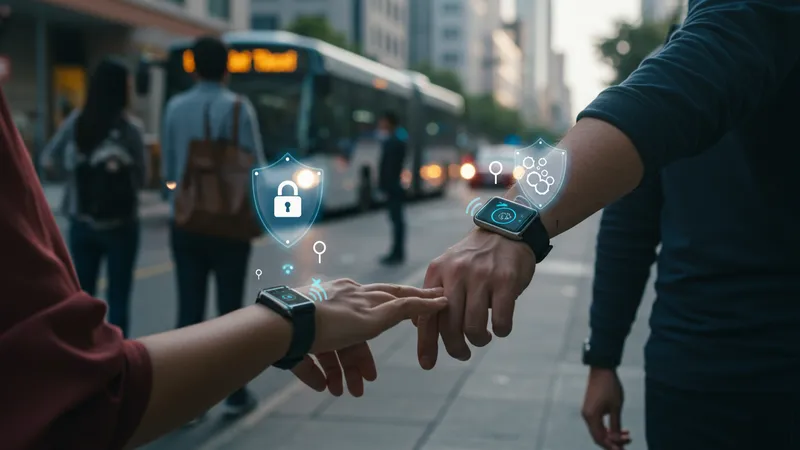
Emerging payment solutions linked to smartwatches facilitate seamless travel transactions, from transit passes to ride services. With contactless options becoming the norm, the watch becomes an all-in-one travel companion. This tech revolution in transportation not only simplifies processes but also accelerates digital economies. Yet, it also presents significant privacy and security concerns. As watches store more sensitive payment data, what measures are in place to guard against theft and misuse? The safeguards necessary to protect this advancing frontier are paramount.
Monitoring pedestrian movement and cyclist navigation is evolving through smartwatch integration. They offer route optimization, safety alerts, and health-tracking benefits, converging to uplift urban mobility experiences. This responsiveness to real-time information embodies a critical integration of activity and safety. Yet, the increased reliance on digital connectivity risks infringing on personal freedom and spontaneity. As cities become more digitally wired, what's the impact on personal discovery? Balancing technology-assisted travel with the joy of exploration is key to progressing urban landscapes
Furthermore, smartwatches are making headway into autonomous vehicle operations, providing remote connectivity and real-world data to enhance vehicular performance. The potential to personalize commutes based on preferences entails intelligent car-watch interactions, representing a new era in transport personalization. However, the compensation for these conveniences is met with hesitancy surrounding the control matrix's complexity. How autonomous can our environment truly become before we reach a point of disempowerment? Answering this will determine whether smartwatches bolster independence or subtly automate our lives.
Smartwatches are reshaping financial landscapes of 2025, not just through contactless payments but also by offering sophisticated wallet management solutions. Instant transaction alerts, expense tracking, and financial planning tools integrated into these wearables provide users with real-time control and insights into their spending habits. But this seamless technology also brings forth the risk of financial oversight. With automated alerts directing our finances, are we becoming overly reliant on tech-driven management?
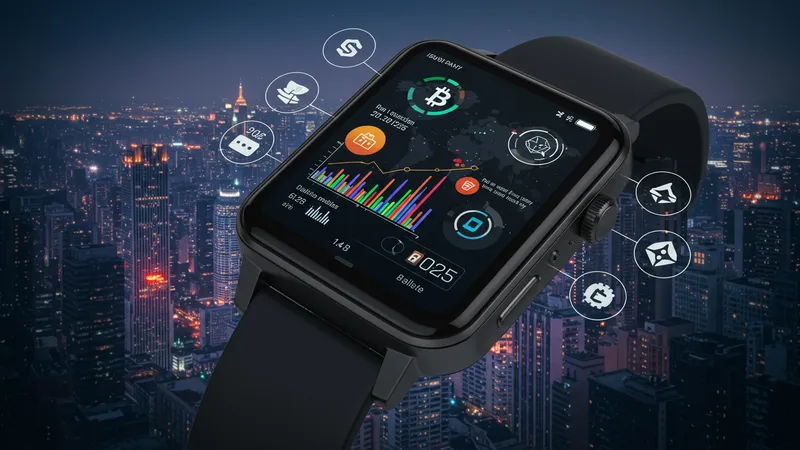
The ability to handle cryptocurrencies directly through smartwatches opens a new chapter in digital economy interactions. Encrypted secure wallet interfaces allow users to exchange assets directly with just a tap. However, the volatility of digital currencies and market fluctuations presents challenges these devices must contend with, notably in terms of stability and user protection. Deconstructing the financial intricacies of integrating currency technology with wearables is more complex than it seems. Can smartwatches support the dynamism of a borderless economy or do they expose uncharted vulnerabilities?
Fintech synergies with smartwatches are nudging financial assurance measures towards innovation. They provide financial literacy tools to users, ranging from investment education to risk assessment simulations. Encouraging informed decisions places financial literacy at the forefront, immensely benefiting users. Yet, despite these advancements, the ambiguity in financial knowledge persists. Can these initiatives sufficiently equip users to traverse economic landscapes, or do they cultivate superficial understanding? Ensuring depth over breadth in financial literacy software within wearables is essential.
Ultimately, consumer trust is paramount to the adoption of financial technologies within smartwatches, calling for robust data privacy and security frameworks. As these devices become daily companions, managing sensitive data securely becomes critical. Strong encryption and continuous monitoring are prerequisites to prevent breaches. However, do current systems adequately protect user safety, or is skepticism towards watch-integrated financial services warranted? Fostering trust in these technologies may redefine the scope of wearable finance, pushing boundaries further than we anticipate.
As wearable technology flourishes, the cultural and practical implications of 2025's smartwatches may signal a transformative age not only in how we interact with tech but in redefining personal narratives. With advancements that enhance communication, health, and work, the wearable tech ecosystem is forging identities intertwined with capability and connectivity. As this trajectory progresses, the legacy of these devices will not lie in their features but in the cultural tapestry they weave. What could possibly temper this rapid integration of tech into our daily realities?
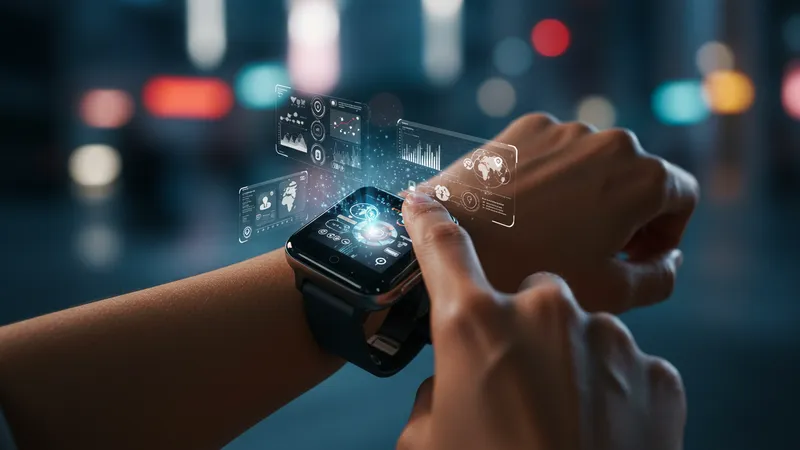
The potential for smartwatches to serve as chroniclers of our lives, capturing memories through biometric, geographic, and contextual information, suggests a new concept of personal legacy. These devices may become time capsules of lived experience, archiving data for posterity. However, there is a fine line between technological memory and invasive surveillance. How shall society safeguard privacy whilst embracing the potential of memory-enhancing tech? The social implications of balancing data legacy with ethical practice present an area ripe for exploration.
Despite their evident benefits, the essential question remains: are smartwatches just a stepping stone towards a more integrated cyborg reality? These devices continuously push boundaries, enhancing human abilities. The psychological impact of living alongside augmentative technology becomes increasingly pertinent as mind and machinery converge. Are we evolving into new hybrids of human-technology interdependence? The existential shift in human identity prompts a challenging but vital discussion on the future of our evolution.
With the closing of 2025, smartwatches may set milestones not only for technological advancement but as societal disruptors inviting discussion on broader concepts of life. Tech is shaping roles, professions, lifestyles, and social interactions at an unprecedented rate. How might this era be remembered—a golden age of wearable tech innovation or a cautionary tale of digital dominance? Unlike previous waves of technology, smartwatches challenge us to reconceive what it means to be both connected and self-sufficient in a fast-paced world.
The story of smartwatches in 2025 encapsulates more than technological advancement; it's a narrative of choice, impact, and the intertwining of human and tech futures. Whether they evolve into timeless classics or spark unforeseen challenges, their significance reaches beyond the microcosm of digital devices. As we navigate a world interconnected by small screens on our wrists, will humanity rise to the occasion, leveraging wearable technology for lasting positive change? The unfolding journey beckons exploration and introspection. Let's share these insights and shape a future where tech serves as a genuine extension of ourselves.